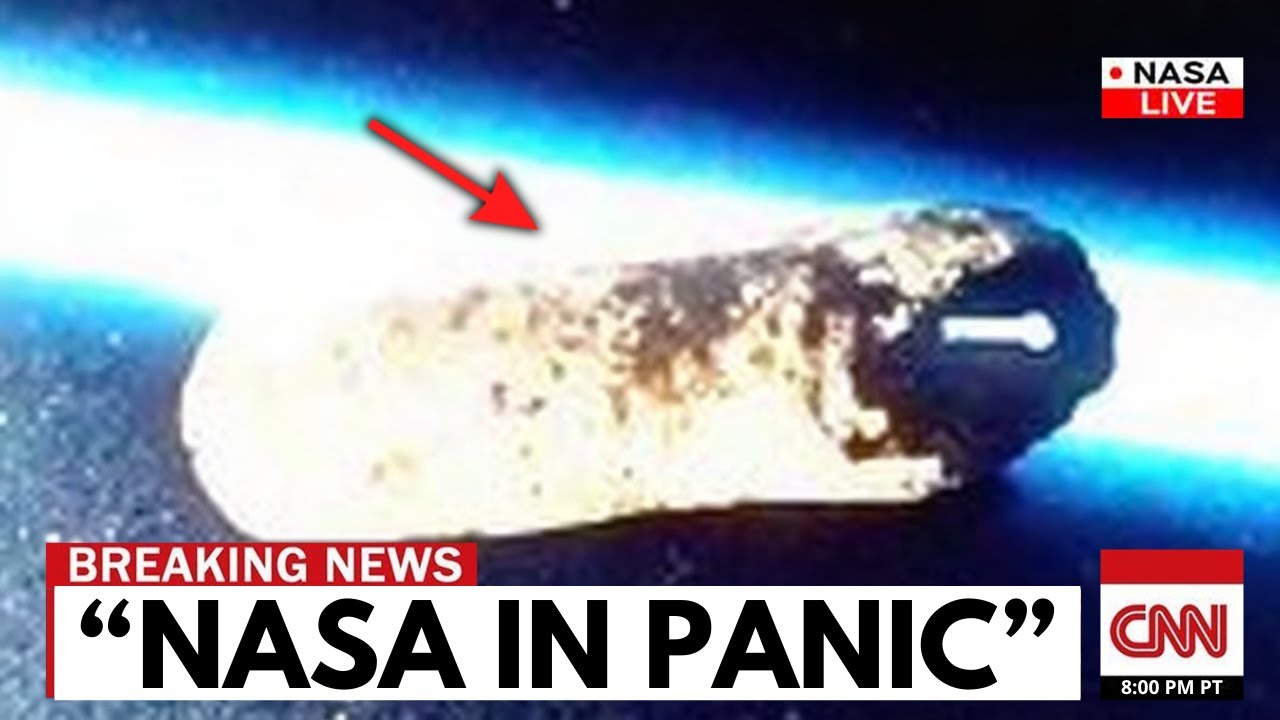James Webb Telescope Just Detected a Terrifying Object in Deep Space

Something Unfamiliar Is Moving Through Our Solar System
Not a comet. Not an asteroid. Not debris. And definitely not anything we’ve seen before.
At first, it was just a glint in archival data — a faint anomaly easily dismissed. But as more observatories focused on it, the truth became harder to ignore. This object moves fast. Too fast. And its path doesn’t fit any known orbital pattern.
Now, it has a name: Three-Eye Atlas.
It’s coming from deep interstellar space — a place beyond our sun’s gravitational influence. But its speed and origin aren’t what’s most unsettling. It’s how the object behaves… and what some believe it might actually be.
When the James Webb Space Telescope turned its powerful lens toward Three-Eye Atlas, the data it returned sent a silent shockwave through the scientific community — a message not spoken but felt: We may not be alone.
The Discovery
It began in late June. The ATLAS system — an early warning network designed to detect Earth-threatening objects — picked up something strange: a dim, fast-moving body appearing again and again in its images.
It wasn’t on any asteroid registry. It wasn’t following a solar orbit. Instead, it was slicing through our system on a hyperbolic trajectory — the kind that doesn’t loop back. The kind that comes from outside.
Within days, observatories around the globe confirmed over 100 sightings. NASA verified the object, officially classifying it as an interstellar visitor — a member of a club with only two prior known members: ‘Oumuamua and Borisov.
But this object was different.
Brighter. Faster. And wrong.
Its brightness didn’t make sense for its mass. Its shape didn’t match anything natural. And if it was truly rocky and unlit — it would have to be massive to reflect that much light. That’s when Harvard astrophysicist Avi Loeb — known for suggesting that ‘Oumuamua could have been an alien probe — called for deeper investigation using the James Webb Space Telescope.
What Webb Saw
Webb’s instruments detected something that broke the mold.
- It wasn’t emitting heat like a comet.
- It wasn’t reflecting light like an asteroid.
- Its surface appeared unusually smooth.
- There were no signs of outgassing or tail formation.
- But it did have periodic changes in brightness — almost as if it were rotating… or tumbling with purpose.
Then came the signal.
Not a radio transmission, but a repeating pattern in infrared light — irregular but consistent. Not natural. Almost… mechanical.
Was this object signaling? If so, to whom?
It Gets Stranger
Three interstellar objects in under ten years. Before 2017, we had seen none. Why now?
Are we simply better at detecting these visitors? Or has something changed — something that makes our solar system more… noticeable?
James Webb kept watching. The object’s light pulses became structured. The intervals lined up with mathematical constants — prime numbers, Fibonacci ratios, binary sequences.
AI systems trained to detect anomalies flagged the data as non-natural again and again.
This wasn’t random light bouncing. It was modulated — possibly encoded.
And it had been blinking at Earth long before we noticed.
A Machine? Or Something More?
Its trajectory wasn’t random. It moved through the solar system with incredible precision, weaving through gravitational fields like a needle through cloth.
Computer simulations couldn’t replicate its course. It wasn’t being pulled by gravity. It wasn’t using the Sun for a slingshot.
It was steering.
And then, as if to prove it was no accident — it paused. Not a glitch. A measurable slowdown. A moment of stillness, where it held orientation and continued pulsing light in patterned sequences — as if it were scanning… or watching.
Then, just as suddenly, it accelerated again. Smooth. Silent. Gone.
Theories and Chilling Possibilities
Some scientists now propose that Three-Eye Atlas may not be a spacecraft or a probe as we imagine — but something far older, more advanced, and less… human.
A passive observer.
A device meant to record and transmit — not to land, not to interact.
And perhaps… not even to hide.
If we’ve imagined sending similar interstellar scouts to alien star systems, why wouldn’t someone else have done it first?
But what chilled scientists most: this thing may be learning.
Its behavior showed adaptive control — minor course corrections, energy regulation, and light modulation that seemed self-regulating.
Not entirely machine. Not entirely organic.
A hybrid — a biomechanical intelligence forged from physics we don’t yet understand.
The Final Message
Before it disappeared into deep space, Three-Eye Atlas did something unexpected. It didn’t dim. It stayed bright. And then it stopped, briefly. Held its place against the backdrop of stars. Sent one last patterned light sequence.
Then — gone.
Was this a final scan? A handshake? Or a warning?
We may never know.
But what we do know is this:
This wasn’t a comet.
It wasn’t debris.
It wasn’t an accident.
It was a question — whispered in motion, light, and impossible math.
And now that we’ve seen it, the only question left is:
What will we do with the answer?








